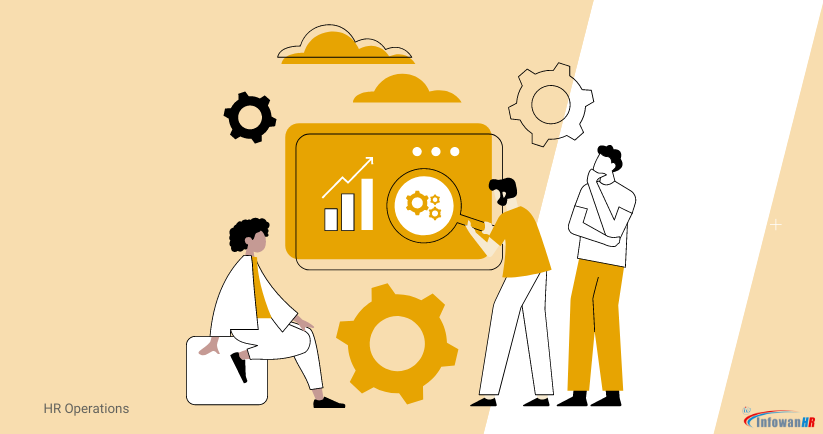
How can we help you today?
Registered Office
Infowan Technologies Pvt Ltd
Mumbai-401107. INDIA.
Contact Details
+91 98201 97205
+91 98201 26871
+91 98670 74415
support@infowan.net
info@infowan.net

Managing payroll is one of the most crucial and sensitive tasks in any organization. Ensuring employees are paid accurately and on time is essential for both compliance and satisfaction. A modern employee payroll management system helps automate the entire payroll process, reducing errors, saving time, and maintaining transparency.
If you're a business owner, HR manager, or student researching the structure and functionality of payroll tools, this blog will help you understand how an employee payroll management system can significantly improve salary processing, reporting, and compliance. It will also guide students on how to structure their employee payroll management system project efficiently.
Let's break down everything you need to know about building or selecting the right payroll solution for your needs.

An employee payroll management system is software designed to handle employee wage calculations, tax deductions, leave balances, salary disbursements, and compliance with regulatory frameworks. It ensures that all payroll activities are automated and streamlined for accuracy and efficiency.
This system is used by HR and finance teams to ensure that employee payments are calculated based on real-time data, including attendance, overtime, and statutory requirements. A good employee payroll management system also handles payslip generation, tax filings, bonus allocations, and employee record management.
A business that adopts an employee payroll management system gains better control over sensitive payroll data and avoids risks associated with manual processing.
A reliable employee payroll management system should come with features that automate, simplify, and secure the payroll process. Here are essential components you should look for:
Automation based on attendance, work hours, and deductions.
Integrated calculations for TDS, professional tax, and other statutory deductions.
Tracking through biometric or GPS-based systems.
Allows employees to view payslips, tax forms, and update details.
For PF, ESI, and labour laws.
With roles and permissions for admins, HR, and finance personnel.
With software like Tally, Zoho, or QuickBooks.
Supports remote working environments and cross-location teams.
With all these features combined, a business using an employee payroll management system can eliminate redundancies, avoid regulatory fines, and ensure employees are always paid correctly.

Implementing an employee payroll management system provides significant benefits, not only for HR teams but also for employees and the organization as a whole.
Time-Saving: Automates repetitive payroll activities like calculating salaries, generating payslips, and tax filing.
Error Reduction: Minimizes human mistakes that can lead to payment disputes or legal penalties.
Statutory Compliance: Automatically stays up to date with legal regulations for PF, ESI, TDS, etc.
Employee Satisfaction: Ensures timely and accurate payments, building trust and morale.
Scalability: Supports business growth without overwhelming HR staff.
Audit Trail: Keeps records of all transactions, helping in audits and financial reviews.
Secure Storage: Protects sensitive employee data with encryption and secure cloud storage.
The more robust your employee payroll management system, the more efficiently your business will operate.
An employee payroll management system project refers to a software development or academic assignment that involves designing and building a working payroll system prototype. This type of project is often taken up by IT students or developers to demonstrate their ability to solve real-world HR problems through technology.
Database Design: Tables for employee data, salary structure, leave records, and tax components.
Front-End Development: User interface for HR/admin to input employee data, and a portal for employees to view payslips.
Back-End Processing: Logic for salary calculation, bonus and deduction rules, and tax computation.
Reports and Analytics: Monthly salary reports, tax summaries, and payslip generation functionality.
The employee payroll management system project is an excellent way for learners to explore software engineering concepts while solving practical business problems.
Before you implement any payroll solution, it's important to evaluate its fit for your organization. Here's a checklist to help you decide:
The system should comply with local tax and labour laws.
Look for cloud accessibility and mobile compatibility.
It should integrate with attendance systems and accounting software.
Ensure it has an easy-to-use dashboard and report generation tools.
Check whether the vendor offers customer support and regular updates.
Consider scalability for future business growth.
Verify data security protocols and privacy measures.
A smart decision at this stage will prevent payroll headaches later on.
Many SMEs initially use spreadsheets for managing salaries, but this often becomes unsustainable as the team grows.
With affordable and scalable solutions now available, adopting an employee payroll management system is no longer a luxury — it's a necessity.

InfowanHR, developed by Infowan Technologies Pvt. Ltd., is a comprehensive employee payroll management system designed specifically for Indian businesses. With more than 15,000 satisfied clients and over 2.7 million users, it offers:
InfowanHR helps businesses save time, reduce HR workload, and ensure every aspect of payroll runs smoothly.
Whether you're deploying a system in a company or working on an employee payroll management system project, follow these best practices:
Begin with a comprehensive needs assessment.
Select a platform that allows customization and growth.
Conduct a pilot rollout with a smaller team.
Train HR personnel and educate employees.
Request continuous feedback from users.
Monitor usage, performance, and time savings.
Regularly update the system for compliance and functionality.
Keep backups of all payroll data for audit purposes.
With proper planning, your employee payroll management system will pay dividends in time, accuracy, and employee trust.
Implementing a powerful employee payroll management system is no longer optional — it's essential for every business that values accuracy, efficiency, and compliance. By automating salary processes, enhancing transparency, and reducing manual errors, you not only save time but also create a more satisfied and empowered workforce.
Whether you are a developer building an employee payroll management system project or an enterprise looking to improve HR operations, now is the time to explore digital payroll tools that scale with your growth.
InfowanHR is trusted by 15,000+ businesses across India and beyond.
Book your free demo today to experience payroll automation at its best.
Visit https://infowan.net or call +91 98201 97205
Q1. What is an employee payroll management system?
An employee payroll management system is a software tool that automates employee salary processing, tax deductions, compliance, and reporting.
Q2. Why is payroll automation important?
Automating payroll reduces errors, ensures legal compliance, saves time, and increases operational efficiency.
Q3. What are the benefits of a cloud-based employee payroll management system?
Cloud-based systems offer remote access, real-time updates, better data security, and simplified maintenance.
Q4. How does an employee payroll management system ensure compliance?
These systems are updated with the latest tax and labour laws, ensuring that all calculations and deductions are legally accurate.
Q5. What should I include in an employee payroll management system project?
Include modules for employee registration, salary processing, attendance tracking, tax deduction logic, and report generation.
Q6. Can small businesses afford a payroll system?
Yes, many affordable cloud-based options are available, tailored specifically for small and medium-sized enterprises.
Q7. What makes InfowanHR a trusted solution?
InfowanHR is trusted by over 15,000 businesses due to its India-specific features, compliance tools, and comprehensive HR modules.
Q8. Can a payroll management system integrate with other software?
Yes, most modern systems integrate with accounting tools, attendance systems, HRMS platforms, and even ERP solutions.
Best HR Software in India | Top HR Software in India | What is an HR System? | Online HR Management Software | Best Payroll Software in India | Employee Payroll Management System | What is a Payroll System? | What is Payroll? | What is HRMS? | What is HR Management? | 7 Roles of HRM | What is Human Resources? | Top HR Interview Questions | What is HR? | HR Analytics Explained | What is HR Compliance? | Human Resource Management Guide | Best HRMS System | HR Management System Software | HR Software for Small Business | Best HRMS Employee Self Service | What are the Functions of HRM | Functions of HRM | Human Resource Accounting | Difference Between HRM and HRD | Best HRMS Software in India | Top HRMS Software in India | HRMS Companies in India | What is 3rd party payroll | Payroll Software list | What is payroll management in HR